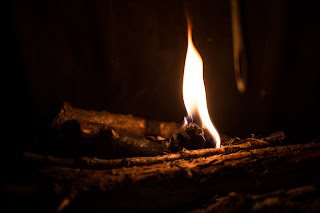The
Nest we got for Christmas is still useful, although it has some annoying quirks. The most prominent being that while they tout the amazing energy savings you will receive by owning one, they make it really annoying to actually get at the data. You can see how long the heat runs, for up to ten days, on the Nest, the iOS Nest app, and the nest.com website, but the data is always presented as pictures - which means there's no straightforward way to record the data yourself. Which you have to do because they only show the past ten days. The monthly email they send is similarly useless.
So what I have done since our oil tank was (
finally) filled is keep a log of the Nest-reported heat usage and any notes for unusual activity for each day. Fifty-seven days later, we received 139.6 gallons of heating oil (at $4.29/gallon). Data analytics time!
First thing: get the outdoor temperature for each of those 57 days from
wunderground.com. You can type in custom date ranges and get lots of information - I decide just to use the mean temperature. Which allows me to make this simple plot showing temperature and energy usage.
 |
| Date on the x-axis. Mean temperature (F) on the left y-axis and heating hours on the right y-axis. |
There's clearly an inverse relationship between heating hours and mean outdoor temperature. I made a scatter plot with heating hours versus mean temperature (F) to show this relationship more clearly.
Because I took notes I know that the outlier you see at 44 degrees and 5.5 heating hours is because we turned up the thermostat to 70 when we were having some guests over. I was pleased to see that the trend between heating hours and temperature is linear - this makes it trivially easy to model energy usage related to outdoor temperature.
By model, I mean create an equation that shows the relationship between the outdoor temperature and how much heat we use. How do we make the equation? By sending the data in the plot above to the statistical software
R and asking it to find the straight line (in blue) that fits the dots best. Which is: heating hours = (-0.17 * mean outdoor temperature (F)) + 10.43. This may look familiar if you remember back to your algebra lesson. This is a form of y = mx + b, the
slope-intercept formula.
How is this useful? Well, if I know the temperature outside, I can predict how many heating hours the house needs. For example, on February 1st, the outdoor mean was 29 F and the equation predicts that we should use 5.5 hours of heat. We actually used 5.25 hours.
Unfortunately, this model only holds up for our current temperature settings. We only have a few recorded days where we overrode the settings. Not enough to make a new model that incorporates new temperature settings. But with a few points, I can make an educated guess about how changing the thermostat inside changes our energy usage. We had two days where we increased the temperature inside by 4 and 6 degrees. On those days we used 15% and 75% more heat. On the two days we decreased the temperature by 4 degrees we used 10% and 30% less heat. So, we will not save much by reducing the heat, but increasing the heat could cost us several hundred more a winter.
Another reason I have been tracking our heat usage with the oil deliveries is to see how much fuel we use to heat the house, per hour. We got 139.6 gallons and ran the heat for a total of 216.5 hours. That works out to about 1 gallon heating the house for 1.5 hours. At $4.29/gallon that's a about $2.86 for an hour of heating. At our current temperature settings, that means that we will be spending about $1000 a year on heat.
According to
this, it takes about seven gallons of oil to create one
mmbtu of energy. At current oil prices, that means it takes over $28 to make one mmbtu. Natural gas costs only
about $4 for an mmbtu. Which is a whopping price difference. $1000 of oil-powered heat might could be replaced with only about $200 of natural gas. The problem is the cost of conversion - since we have water-filled radiator heat, a new boiler, installed, would cost around $10,000. Which means that it would take over ten years to make the money back, at our current energy usage! Still, if we increase our indoor temperature to the
US average of just over 70 F, then our payback timeframe would get closer to five years. Also, we could have a gas cooking range! This spring/summer we plan on getting some quotes on what the conversion would actually cost.
















